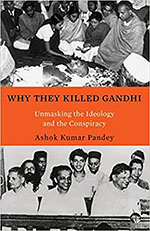Well-known Gandhian scholar Sudhir Chandra has poignantly noted in one of his essays, ‘Gandhi’s Sorrows’, that while in the thirty-two years that he spent resisting colonial rule Gandhiji was never once harmed, Independent India was able to keep this apostle of peace alive only for a mere five and a half months. This has remained a shameful blot on the otherwise glorious history of India’s struggle for Independence. Ashok Kumar Pandey’s Why They Killed Gandhi: Unmasking the Ideology and the Conspiracy and Appu Esthose Suresh and Priyanka Kotamraju authored The Murderer, The Monarch and The Fakir: A New Investigation of Mahatma Gandhi’s Assassination provide fresh perspectives to one of the most hotly contested political developments in Independent India, viz., the assassination of Mahatma Gandhi. The authors in these studies have not just highlighted the many unknown facets related to Gandhiji’s murder but have also studied at length the evolutionary history of Hindutva politics and the role it played in the entire episode.
Ashok Kumar Pandey’s book was originally written in Hindi. It was subsequently translated into English by the author himself. The book is divided into three parts. In the first part, ‘Who Were They?’, Pandey gives an overview of the social and political background of the culprits involved in the heinous crime. Apart from the seven people who were involved in the actual execution of the plan, the chapter also discusses, albeit briefly, the role of individuals like GM Joshi and Dixit Maharaj, among others, who, even though never tried in the court of justice, took an active part in the conspiracy.

